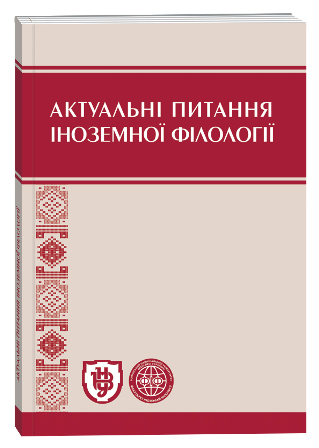НАРАТИВНИЙ ГРИФОНАЖ ЯК ТЕХНІКА ТВОРЕННЯ ТЕКСТОВО-ГРАФІЧНИХ НАРАТИВІВ
DOI:
https://doi.org/10.32782/2410-0927-2021-15-17Ключові слова:
наративний грифонаж, наративна техніка, наратор, фокалізатор, щоденникАнотація
Наукову розвідку присвячено дослідженню особливостей конструювання графічних наративів, адресатом яких є читач-дитина. Теоретико-методологічне підґрунтя дослідження становлять праці з класичної та мультимодальної наратології, а також наукові доробки, сфокусовані на вивчення художніх текстів для дітей. Під графічним наративом розуміємо художній текст, створений за допомогою вербальних та невербальних засобів, у якому відбито історію про подію, що розгортається у художньому часі і просторі, і оповідається наратором крізь призму фокалізатора-дитини. До вербальних засобів творення історії відносимо текст, а до невербальних засобів належать малюнки, типографіка, використання різного кеглю та типу шрифту літер, гра з простором сторінки, стрілки, позначки тощо. Матеріалом дослідження послугували графічні наративи “Diary of a Wimpy Kid”, створені американським письменником та розробником комп’ютерних ігор Джефом Кінні та “Tom Gates. Biscuits, Bands and very big Plans”, авторкою якого є англійська письменниця Ліз Пішон. Графічні наративи створено у формі щоденника, який ведуть підлітки на ім’я Грег та Том. Особливістю графічного наративу є саме техніка його створення, яку ми кваліфікуємо як наративний грифонаж. Наративний грифонаж – техніка вербального та невербального творення історії, однією з особливостей якої є візуальний вигляд наративу, що нагадує побіжні ескізи/замальовки дитини, а шрифт літер імітує рукописний почерк дитини (підлітка). Наратором та фокалізатором досліджуваних наративів є Грег/Том, а графічні позначки, малюнки, простір сторінки стають графічними засобами творення його точки зору як фокалізатора. У роботі виявлено графічні засоби творення візуальної образності, як-от візуальної метонімії. Визначено роль малюнків у творенні смислів загалом та коннструюванні наративу зокрема.
Посилання
Цапів А. О. Текстово-графічні наративні техніки у когнітивному вимірі. Науковий вісник Херсонського державного університету. Серія «Лінгвістика», 2018. 34 (2). С. 201–205.
Цапів А. О. Поетика наративу англійськомовних художніх текстів для дітей : дис. доктора філол. наук: 10.02.04 / Харківський національний університет імені В. Н. Каразіна, Харків, 2020. 419 с.
Шмид В. Нарратология. М. : Языки славянской культуры, 2003. 312 с.
Alber J. Unnatural narrative: Impossible worlds in fiction and drama. Lincoln and London : University of Nebraska Press, 2016. 330 p.
Arizpe E., Styles M. Children reading picture books: interpreting visual texts. London & New York : Routledge, 2016. 214 p.
Cohn N. The visual language of comics: introduction to the structure and cognition of sequential images. London, New Delhi, New York, Sydney : Bloomsbury. 2013. 221 p.
Fludernik M. An introduction to narratology. London and New York : Rouledge. Taylor and Francis group, 2002. 190 p.
Kinney J. Diary of a Wimpy Kid. London : Puffin, 2010. 218 p.
Kress G. & van Leeuwen T. Reading images: The grammar of visual design (2nd ed.). London and New York : Routledge Taylor & Francis Group, 2006. 321 p.
Kukkonen K. Contemporary comics storytelling. Lincoln and London : University of Nebraska Press, 2013. 231 p.
Nikolajeva M., & Scott C. The dynamics of picturebook communication. Children’s literature in education, 2000. 31 (4), 225–239.
Nodelman P. Decoding the images: How picture books work. In P. Hunt (Ed.), Understanding Children’s literature. London and New York : Routledge Taylor & Francis Group. 2005. P. 128–139.
Nørgaard N. (2010). New perspectives on narrative and multimodality. In R. Page (Ed.), Multimodality and the literary text: Making sense of Safran Foer’s ‘Extremely loud and incredibly close’. New York, London : Routledge Taylor & Francis Group, 2010. P. 115–126.
Page R. (Ed.). New perspectives on narrative and multimodality. New York, London : Routledge Taylor & Francis Group, 2010. 242 p.
Pichon K. Tom Gates: biscuits, bands and very big plans. London : Scholastic children’s books, 2018. 272 p.







